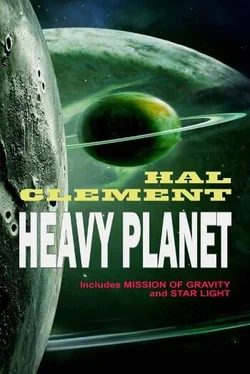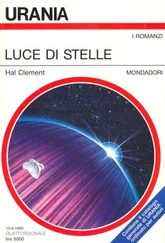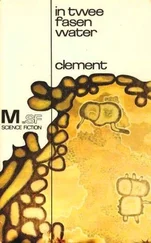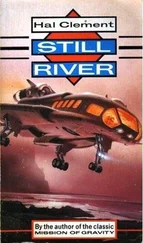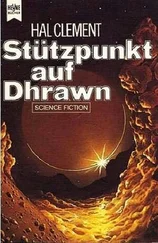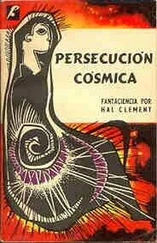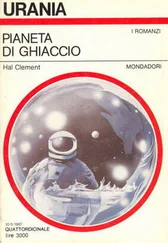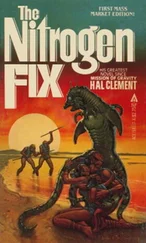In the case of the 61 Cygni system, the normal methods were put to work; and they came up immediately with a disconcerting fact. The period and size of the orbit, coupled with the fairly well-known mass of the visible stars, indicated that the dark body has a mass only about sixteen thousandths that of the sun — many times smaller than any star previously known. It was still about sixteen times the mass of Jupiter, the largest planet we knew. Which was it — star or planet? Before deciding on the classification of an object plainly very close to the borderline, we must obviously decide just where the borderline lies. For general purposes, our old grade-school distinction will serve: a star shines by its own light, while a planet is not hot enough for that and can be seen only by reflected light from some other source. If we restrict the word “light” to mean radiation we can see, there should be little argument, at least about definitions. (If anyone brings up nontypical stars of the VV2 Cephei or Epsilon2 Aurigae class I shall be annoyed.) The trouble still remaining is that we may have some trouble deciding whether this Cygnus object shines by intrinsic or reflected light, when we can’t see it shine at all. Some educated guessing seems in order. There is an empirical relation between the mass of a star, at least a mainsequence star, and its actual brightness. Whether we would be justified in extending this relation to cover an object like 61 Cygni C — that is, third brightest body in the 61 Cygni system — is more than doubtful, but may be at least suggestive. If we do, we find that its magnitude as a star should be about twenty or a little brighter. That is within the range of modern equipment, provided that the object is not too close to the glare of another, brighter star and provided it is sought photographically with a long enough exposure. Unfortunately, 61 C will never be more than about one and a half seconds of arc away from its primary, and an exposure sufficient to reveal the twentieth magnitude would burn the image of 61 A or B over considerably more than one and a half seconds’ worth of photographic plate. A rotating sector or similar device to cut down selectively on the light of the brighter star might do the trick, but a job of extraordinary delicacy would be demanded. If anyone has attempted such a task, I have not seen his published results. If we assume the thing to be a planet, we find that a disk of the same reflecting power as Jupiter and three times his diameter would have an apparent magnitude of twenty-five or twenty-six in 61 C’s location; there would be no point looking for it with present equipment. It seems, then, that there is no way to be sure whether it is a star or a planet; and I can call it whichever I like without too much fear of losing points in the game. I am supposing it to be a planet, not only for story convenience but because I seriously doubt that an object so small could maintain at its center the temperatures and pressures necessary for sustained nuclear reactions; and without such reactions no object could maintain a significant radiation rate for more than a few million years. Even as a planet, though, our object has characteristics which will call for thought on any author’s part.
Although sixteen times as massive as Jupiter, it is not sixteen times as bulky. We know enough about the structure of matter now to be sure that Jupiter has about the largest volume of any possible “cold” body. When mass increases beyond this point, the central pressure becomes great enough to force some of the core matter into the extremely dense state which we first knew in white dwarf stars, where the outer electronic shells of the atoms can no longer hold up and the nuclei crowd together far more closely than is possible under ordinary — to us, that is — conditions. From the Jupiter point on up, as mass increases the radius of a body decreases — and mean density rises enormously. Without this effect — that is, if it maintained Jupiter’s density with its own mass—61 C would have a diameter of about two hundred fifteen thousand miles. Its surface gravity would be about seven times that of the Earth. However, the actual state of affairs seems to involve a diameter about equal to that of Uranus or Neptune, and a surface gravity over three hundred times what we’re used to. Any science fiction author can get around that, of course. Simply invent a gravity screen. No one will mind little details like violation of the law of conservation of energy, or the difference of potential across the screen which will prevent the exchange of anything more concrete than visual signals; no one at all. No one but Astounding readers, that is; and there is my own conscience too. I might use gravity screens if a good story demanded them and I could see no legitimate way out; but in the present case there is a perfectly sound and correct means of reducing the effective gravity, at least for a part of a planet’s surface. As Einstein says, gravitational effects cannot be distinguished from inertial ones. The so-called centrifugal force is an inertial effect, and for a rotating planet happens to be directed outward — in effect — in the equatorial plane. I can, therefore, set my planet spinning rapidly enough to make the characters feel as light as I please, at least at the equator. If that is done, of course, my nice new world will flatten in a way that would put Saturn to shame; and there will undoubtedly be at least one astronomer reading the story who will give me the raised eyebrow if I have it squashed too little or too much. Surely there is some relation between mass, and rate of spin, and polar flattening— I was hung up on that problem for quite a while. Since I had other things to do, I didn?t really concentrate on it; but whenever a friend whose math had not collapsed with the years crossed my path, I put it up to him. My own calculus dissolved in a cloud of rust long, long ago. I finally found the answer?or an answer?in my old freshman astronomy text, which is still in my possession. I was forcibly reminded that I must also take into account the internal distribution of the planet?s mass; that is, whether it was of homogeneous density or, say, almost all packed into a central core. I chose the latter alternative, in view of the enormous density almost certainly possessed by the core of this world and the fact that the outer layers where the pressure is less are presumably of normal matter. I decided to leave an effective gravity of three times our own at the equator, which fixed one value in the formula. I had the fairly well known value for the mass, and a rough estimate of the volume. That was enough. A little slide-rule work gave me a set of characteristics which will furnish story material for years to come. I probably won’t use it again myself — though that’s no promise2—and I hereby give official permission to anyone who so desires to lay scenes there. I ask only that he maintain reasonable scientific standards, and that’s certainly an elastic requirement in the field of science fiction.
The world itself is rather surprising in several ways. Its equatorial diameter is forty-eight thousand miles. From pole to pole along the axis it measures nineteen thousand seven hundred and forty, carried to more significant figures than I have any right to. It rotates on its axis at a trifle better than twenty degrees a minute, making the day some seventeen and three quarter minutes long. At the equator I would weigh about four hundred eighty pounds, since I hand-picked the net gravity there; at the poles, I’d be carrying something like sixty tons. To be perfectly frank, I don’t know the exact value of the polar gravity; the planet is so oblate that the usual rule for spheres, to the effect that one may consider all the mass concentrated at the center for purposes of computing surface gravity, would not even be a good approximation if this world were of uniform density. Having it so greatly concentrated helps a great deal, and I don’t think the rough figure of a little under seven hundred Earth gravities that I used in the story is too far out; but anyone who objects is welcome if he can back it up. (Some formulae brought to my attention rather too late to be useful suggest that I’m too high by a factor of two; but whose formulae are the rougher approximations I couldn’t guess — as I have said, my math has long since gone to a place where I can’t use it for such things. In any case, I’d still stagger a bit under a mere thirty tons.) CROSS SECTION of MESKLIN Shaded portion represents Earth on the same scale. Dotted lines are arctic and antarctic circles. Listed values of gravity (effective), represented by numbers at appropriate latitudes, are very approximate.
Читать дальше
